 Harrison, MI
Harrison, MILight Rain Fog/Mist, 51°
Wind: 0.0 mph, N
 Harrison, MI
Harrison, MI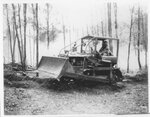
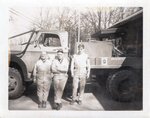
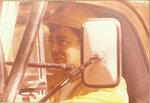
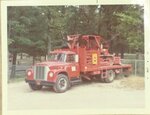
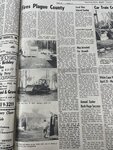

Spring is Forest Fire Season in Michigan and the months of April and May have always been prime time. The Michigan Department of Natural Resources strategically positions personnel and firefighting equipment at Field Offices in communities around the state.
My name is Ken Rouston. I began working for the Michigan DNR Forest Fire Division at the Harrison Field Office on August 16, 1970. I was a 23-year-old city kid. Born in Detroit, raised in Saginaw. Before I took this job, I had no idea that we even had forest fires in Michigan.
My official DNR position was Conservation Aide. It was the old Towerman classification. The Harrison Fire Tower was still in place when I started. It was located near the end of Coolidge Avenue and Townline Lake Road but it was no longer being used. Aircraft had replaced the Fire Tower system. The bottom sections of the ladder on the Harrison Tower had been removed to keep people from climbing it. I appreciated that because I don’t like climbing and I don’t like heights.
During the 14 years that I worked at Harrison, my job title was changed several times. I started out as a Conservation Aide, then the title was changed to Forest Fire Aide, Equipment Operator and finally Forest Fire Officer.
My primary work responsibility was Forest Fire Control and Prevention, but we assisted with many DNR projects and programs. When I arrived at Harrison, I knew absolutely nothing about fighting forest fires. There were three other employees who worked at Harrison, Stan Ryan, Bob Brubaker and Vern Norman. Vern was a veteran Forest Fire Officer who was usually paired up with me. He took me under his wing, and he pretty much taught me everything that I needed to know. There were no schools or special training centers to get me ready for the tasks at hand.
Along came Tuesday April 12, 1977. I was working as an Equipment Operator at the old DNR Harrison Field Office, 708 N. Clare Avenue, on Old 27 at the south end of the Wilson State Park across the street from Lefty’s Superette. I was now 29 years old with almost 7 years of experience working on fires. The office telephone was quiet since no burning permits were being issued due to the dry conditions in the forest.
On the previous day, Monday, April 11, there had been an intense, 300-acre fire in the Gladwin Refuge East of Meredith. I was tired because I had been out late into the night with my small bulldozer plowing control lines and cleaning up the fire perimeter in the Refuge. On this Tuesday morning, I had just finished loading my dozer back onto the transport truck after making some minor repairs and replacing a leaky hydraulic line.
It was close to 11:00 a.m. when I answered a radio call from the DNR pilot (Air 8) who was just getting airborne from the Gladwin Airport. Air 8 reported that he could see smoke from a fire that was rapidly building in intensity in the direction of Leota. That information put us into motion immediately. It was well known that the Leota area was heavily forested with Jack Pine and had the potential for a catastrophic forest fire. Air 8 radioed again, stating that there was a lot of dense smoke, and he estimated that a couple of acres were already ablaze. He also advised us that the fire was beginning to crown in the heavy Jack Pine timber.
We had two Tractor-plow dozers at Harrison. Fire Officer Vern Norman’s primary attack unit was a 40-year-old 1937 D-4 Caterpillar Tractor-plow. My primary attack unit was a smaller 1968 International 500 Tractor-plow. We immediately closed down the office and headed for Leota. Our Field Office was generally staffed with three people. Our third person was working at the Gladwin Fire. There were two water tanker trucks still at our office, but nobody was immediately available to bring them out. I don’t recall who ended up operating those units, but their response was delayed. I suspect a Keyman or some Wilson State Park employees were called in.
It probably took me 15-20 minutes to reach Leota. Air 8 directed me in to the point of origin of the fire which was behind a mobile home near the intersection of Pierce Rd and Pigeon Drive. The blaze was advancing Northeast from the trailer house. I parked the transport truck, unloaded my dozer and began working along the South flank of the fire. I had never been on a fire that exhibited this much intensity. It was unstoppable right from the start. A feeling of hopelessness came over me and I remember thinking “This is going to be a long day.” The wind was not strong, but the breeze was pushing the fire Northeast in the general direction of Jonesville Bridge. I was plowing a control line parallel to the fire while maintaining about 75 feet from the blaze. Even at this distance, it was very hot, so I could not safely get much closer. It was eerily quiet except for the sound of the dozer, the radio chatter and the usual crackling sounds from the fire. There didn’t seem to be much smoke in my path, so I could see pretty good, but the heat was intense.
Fortunately, I knew the area fairly well since we spent the winters grooming the snowmobile trails that went through that very part of the forest. I was quite sure that there were no structures in the immediate path that the fire was taking. Ahead, it was all undeveloped state and private forest land. The radio traffic confirmed that Fire Officer Norman had begun working on the other side of the fire, or the North flank, with his tractor-plow. It was also apparent that more help was indeed on the way.
So, there we were, the two of us out there all alone for the time being. I was pretty scared, and I could tell from Vern Normans’ tone of voice on the radio that this was very serious and that he was having some difficulties establishing a control line. He was generally not an excitable person.
The Harrison VFD had dispatched units and probably every able-bodied fire fighter that was available in Harrison was sent out to Leota. Some names of Harrison VFD members that I remember from the 1970’s are: Junior Rulapaugh, Jay Reid, Jim Schneider, Bud Huntley, Les Gardner, Bud Keyser, Gary Stocking, Chuck Chapman, Lee Dancer, Willard Dancer, Dale Dancer, and Marion Roth. These are some of the names of folks who were on the Harrison Fire Department. There are more but their names escape me right now. Clare County Sheriff’s Deputies (Jeff Goyt and Mike Conway) were also out there.
Help was on the way and would be arriving shortly, but this fire was not waiting around. I had been working with my dozer for about 45 minutes when I became aware that my plow lines had been breached. Spot fires were erupting around me, and the fire was trying to overtake me from both sides. Small areas of ferns and grass literally burst into flames beside me. It appeared that the only clear path was directly straight ahead. I pulled up my plow and put the dozer in a higher gear so that I could move more quickly ahead of the fire to look for safety. I knew that the Muskegon River was somewhere up ahead of me. The crowning Jack Pine tops were getting close to the point of burning up over the top of me, but I was able to outrun that situation. The roar of the fire and the crackling of burning material and falling embers was intensifying. I used the radio to let folks know of my situation but there was no way anyone could reach my position.
I finally came to a ridge that dropped about 15-20 feet down towards the Muskegon River. Now I could see the river up ahead. The timber type changed at this point. Now I was out of the pine and into a narrow hardwood timber stand alongside the river. This provided some protection for me since the crown fire could not burn in the hardwoods. I wasn’t taking any chances though because the fire was still advancing towards the ridge. I drove the dozer down the steep slope and used the blade to scrape the vegetation away to expose bare soil. Then I parked the dozer on the bare soil and shut the engine off. I grabbed a shovel, the portable radio, a radio antenna and my fire shelter from the dozer and walked towards the river which was only 25 yards away. Even down below the ridge, the radiant heat was incredible. But now, I was sure that I was going to survive. The river was pretty deep right where I was, but I was prepared to enter if necessary.
Conservation Officer Earl LaDere was aware of my predicament and called me on the radio trying to pinpoint my location. He was attempting to reach me in his patrol car on some trail roads, but he was turned back by intense flames. I stood by the river edge and watched the fire as it continued raging up on the high ground consuming everything in its path. Below the ridge, the hardwoods, moist soils and less volatile ground vegetation presented a safe haven for me. A few small spot fires ignited below the ridge in the ground vegetation, but they did not pose a serious problem.
After about 20-25 minutes, I was able to return to my dozer. I was emotionally shaken as I drove the tractor-plow back to the top of the ridge where it was now hot, burned over and extremely smokey. Since I was now inside the fire, I had to somehow get back out to where the fire was still spreading in unburned areas. I carefully picked my way through the burned over landscape and found a small grassy opening that had a trail road running through it. I picked this spot to make a run for it through less intense heat and flames. I got a little singed, but I made it back into the unburned edge of the fire and began plowing more control lines.
In a short time, I was able to connect with other DNR Tractor units and pumper trucks that were coming from the point where the fire had started. I had escaped disaster. It still was not over, but with all the resources on the scene and with the Muskegon River’s help, the prospects of winning control of this fire were in sight. We worked well into the night and returned the next day to control this fire.
That day changed me forever. It was a learning experience. I didn’t fear fires after that, but I sure took a more cautious approach and maintained more awareness of my surroundings. I developed a very deep appreciation for all the VFD folks who had so often stayed out on the fire lines with me over the years when I was out there alone plowing lines.
Today, forest fire dozers are usually accompanied by a water tanker unit whenever they are constructing fire lines. That is a much safer tactic, and it puts another set of eyes out there to help make observations. I worked on putting out hundreds of fires in Clare County over the 14 years (1970-1984) that I was stationed there. There was never another day like the one I experienced on April 12, 1977, in Leota.
Comments
No comments on this item Please log in to comment by clicking here